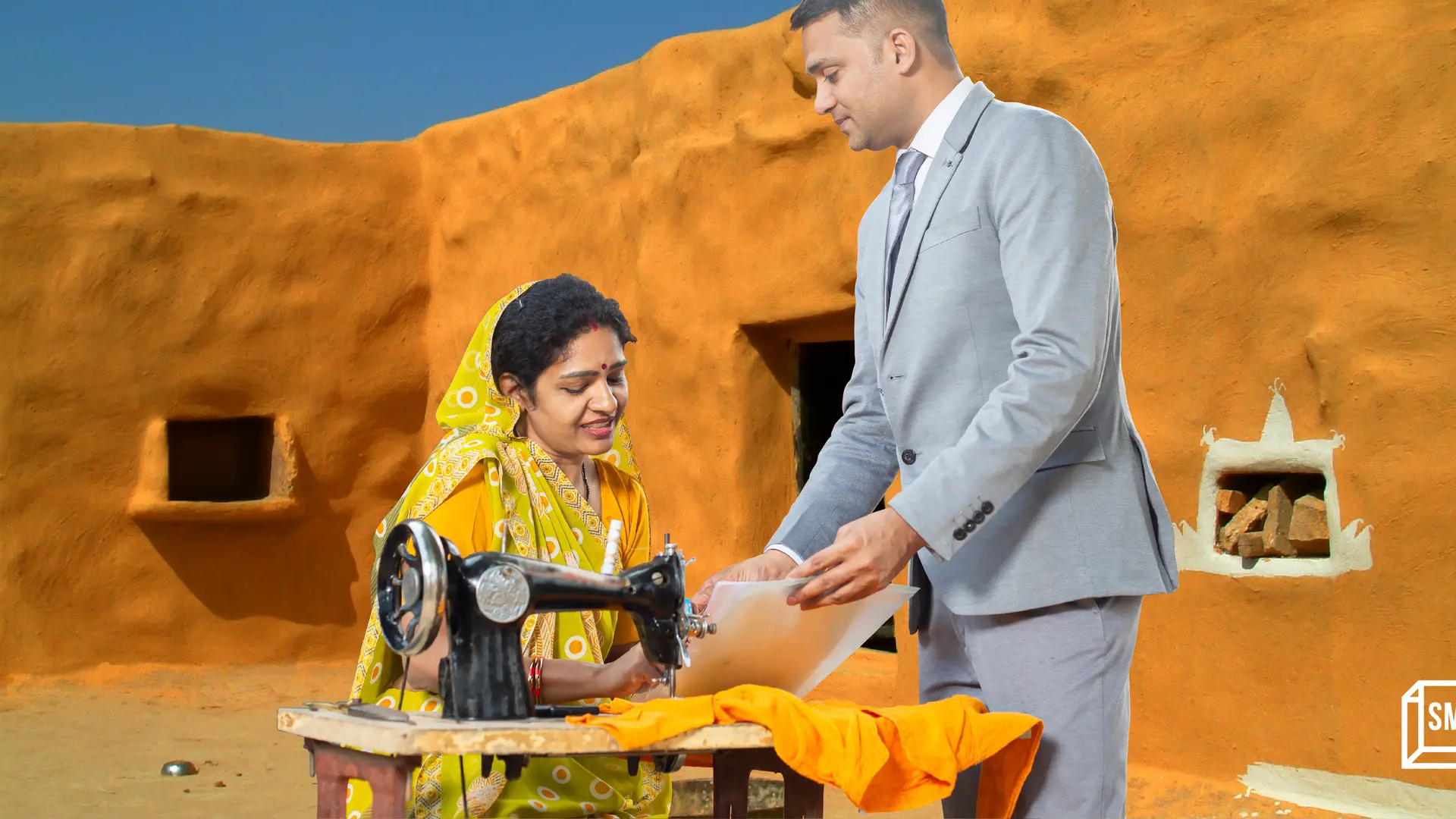How India’s dukandaar is using tech to become aaj ka vyapaari
According to a survey conducted by Ernst & Young, more than 20% of kirana store owners across metros and non-metros have started leveraging online platforms to ensure easier access. Here’s a look at how digitisation has changed the stereotypical image of dukaandars to that of modern traders.
Did you know that only about 12% of the country's trade and commerce operates in the organised sector?
Small and traditional traders, retailers, distributors, and kirana store owners comprise the vast majority of this sector and their numbers dwarf – by a huge margin – the number of large corporations such as Walmart or Reliance.
The reason is simple. Until recently, modern trade houses could not compete with the convenience, familiarity, and comfort that these small local businesses provide. The strength, reach and impact of these small businesses was strikingly demonstrated during the COVID-19 pandemic, when they continued to serve 1.3 billion Indians every day in spite of various disruptions and stresses in the economy.
However, despite essentially being the wheels of the economy, these local traders and shop owners are often associated with the stereotypical image of a ‘dukaandar’ or shopkeeper, which stamps them as old-style traders – visiting suppliers physically to place orders, totalling up each sale with a calculator, issuing handwritten bills to customers etc. In short, still using old tools, methods, and business practices, and not using technology to modernise their operations.
To a large extent, this may still be true.
The fact is that various constraints have limited the growth opportunities of many Micro, Small, and Medium Enterprises (MSMEs). Lack of easy access to credit meant that they had to rely only on funds generated by their own business to grow. Their reach and network were also limited to their first and second-level contacts, leaving a large chunk of their potential market untapped and limiting their geographical reach and expansion.
They also spent a lot of time taking care of regular operations and business functions, including stocking, inventory management, delivery, staffing, maintaining accounts, ensuring tax compliance etc., leaving them with precious little time to focus on growing their business.
Small businesses like wholesalers, distributors, and kirana store owners play an essential role in the Indian consumption ecosystem. These businesses are close to their customers, keeping an eye on their requirements, adapting merchandise selections, and buying in line with seasonal and festive needs.
Think about it.
Local shop owners typically know what you want, the brands you use, the groceries and FMCG items you buy, your shoe size, and maybe even the exact date you will run out of supplies and visit the store for replenishments. The best part is that you don’t even have to say it – they already know. They have their finger on the customer’s pulse.
However, in today’s times, when customer needs and preferences are changing and technology is pervading every aspect of our lives, there is a need for SMBs to also change how they work and operate.

The wave of digitisation
The great news is that this is already happening at a much faster pace and scale than one might imagine. The face of today’s dukandaar or vyapaari is changing, and changing fast! They have proven themselves agile and resilient, having been able to bear the brunt of an unforgiving pandemic.
During the pandemic, lacking other options, many created a simplified online journey using chat apps as a medium for taking orders, providing contactless delivery, and then receiving payments through digital platforms. They are often tech-savvy and upwardly mobile, and are preparing themselves better for modern trade.
The indifferent grocers of the past, prone to stock shortages and inconvenient siestas, are now more concerned with customer experience and retention. Some small supermarkets and food stores have started their own spices and dried fruits brands. Credit and home delivery are increasingly becoming the norm. The adoption of online B2B platforms is rising fast. This is what #Aajkavyapaari looks like.
According to a survey conducted by Ernst & Young, more than 20% of kirana store owners across metros and non-metros have started leveraging online platforms to ensure easier access, wider choice and timely supply of goods and assistance in deliveries.
There is new and easily accessible technology on offer to assist these small businesses.
B2B ecommerce platforms are helping mitigate supply chain bottlenecks for MSMEs by facilitating connections and negotiations with verified sellers and buyers, providing access to doorstep pick-up and delivery of goods, making finance and credit accessible easily and on time, and simplifying business support functions.
Today’s small business is increasingly comfortable leveraging all these tools via an intuitive smartphone app to expand market access, bring operational efficiencies, and run a successful business.
In the past month, we had deep conversations with a number of our MSME customers to get a better sense of how they are adopting technology to change the way they conduct their business.
- Nilesh Agrawal, an #Aajkavyapari, a third-generation entrepreneur and owner of Panjab Shoe House in Kolkata (in business since 1956), said getting on board with B2B e-marketplaces has been a tremendous experience. Punjab Shoe House was an early adopter of technology, having built an automated SAP software a few years ago and implementing barcoding and pick-and-pack facilities. He said getting on the B2B marketplace has further convinced him of the benefits of using technology to streamline and grow his business.
- Mohammed Haneef, who runs a catering business D Fine Foods in Bangalore, said since joining the B2B platform, regular operations like procurement and deliveries happen with minimal effort from his side. Earlier, he would travel long distances almost daily to procure raw materials and now ends up spending a lot of time and money. He puts all the time saved into growing his business.
- Another #Aajkavyapari, Keshav Madaan, owner of Madaan Overseas, a home furnishing company in Panipat, said even though market conditions fluctuated during COVID, the online platform provided stability and continuity in sales and helped improve his business.
Small and medium enterprise owners fought tooth and nail to keep their businesses alive and thriving in a very unforgiving time. They also used all the technology tools at their disposal so they could quickly figure out what works and what doesn’t to best adapt their businesses to changing times, consumer preferences, or supply chains.
It is stories like these and Aaj ke Vyapaari like them that carried the country’s economy through the pandemic. They understand that increased adoption of digitisation and technology is key to expanding and growing their businesses to the next level, and that the collective might of small businesses in India, operating in a quick, frictionless, reliable, transparent, and technologically advanced ecosystem, is what will push India towards becoming a $5 trillion economy.
Edited by Teja Lele








